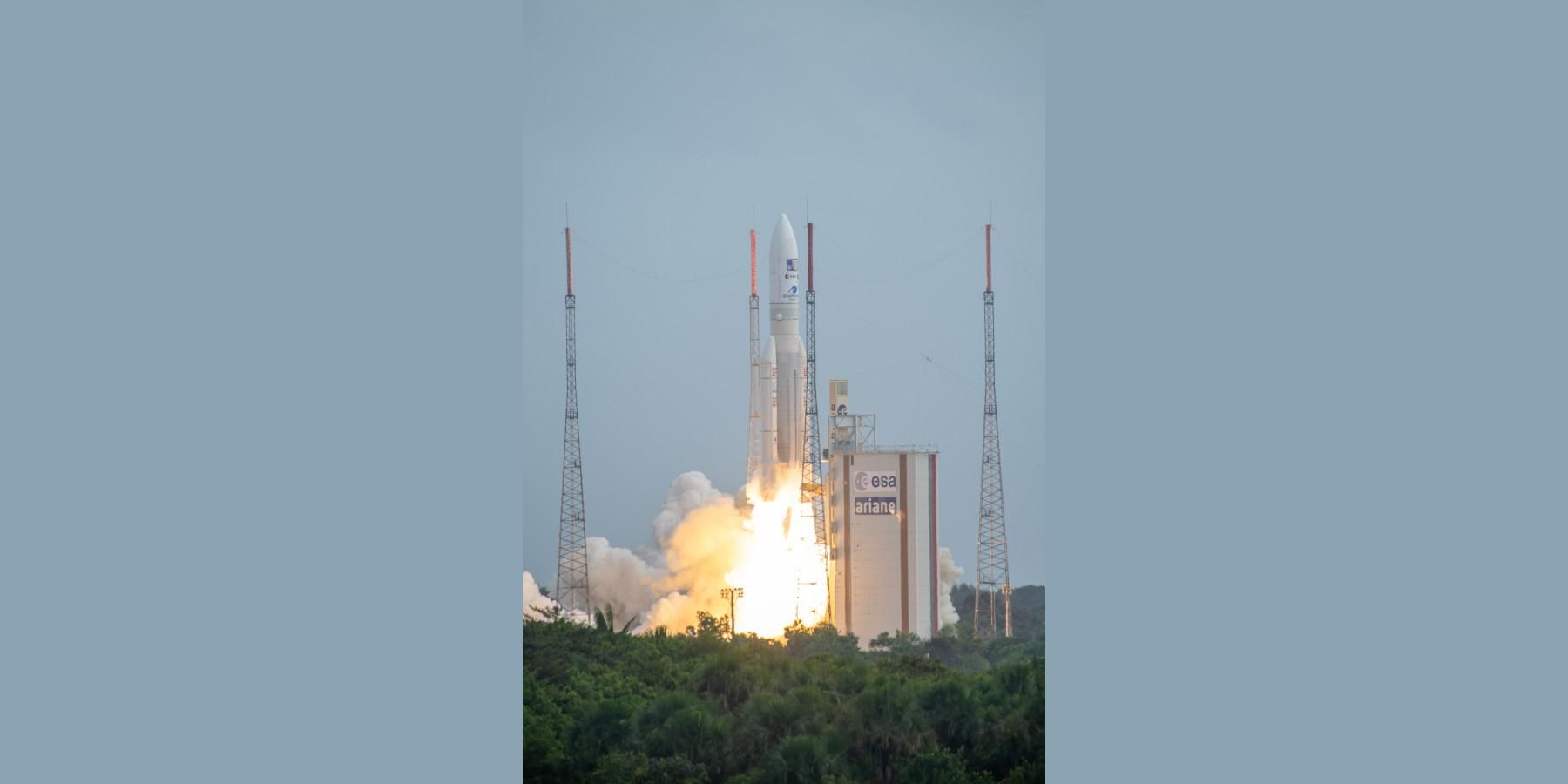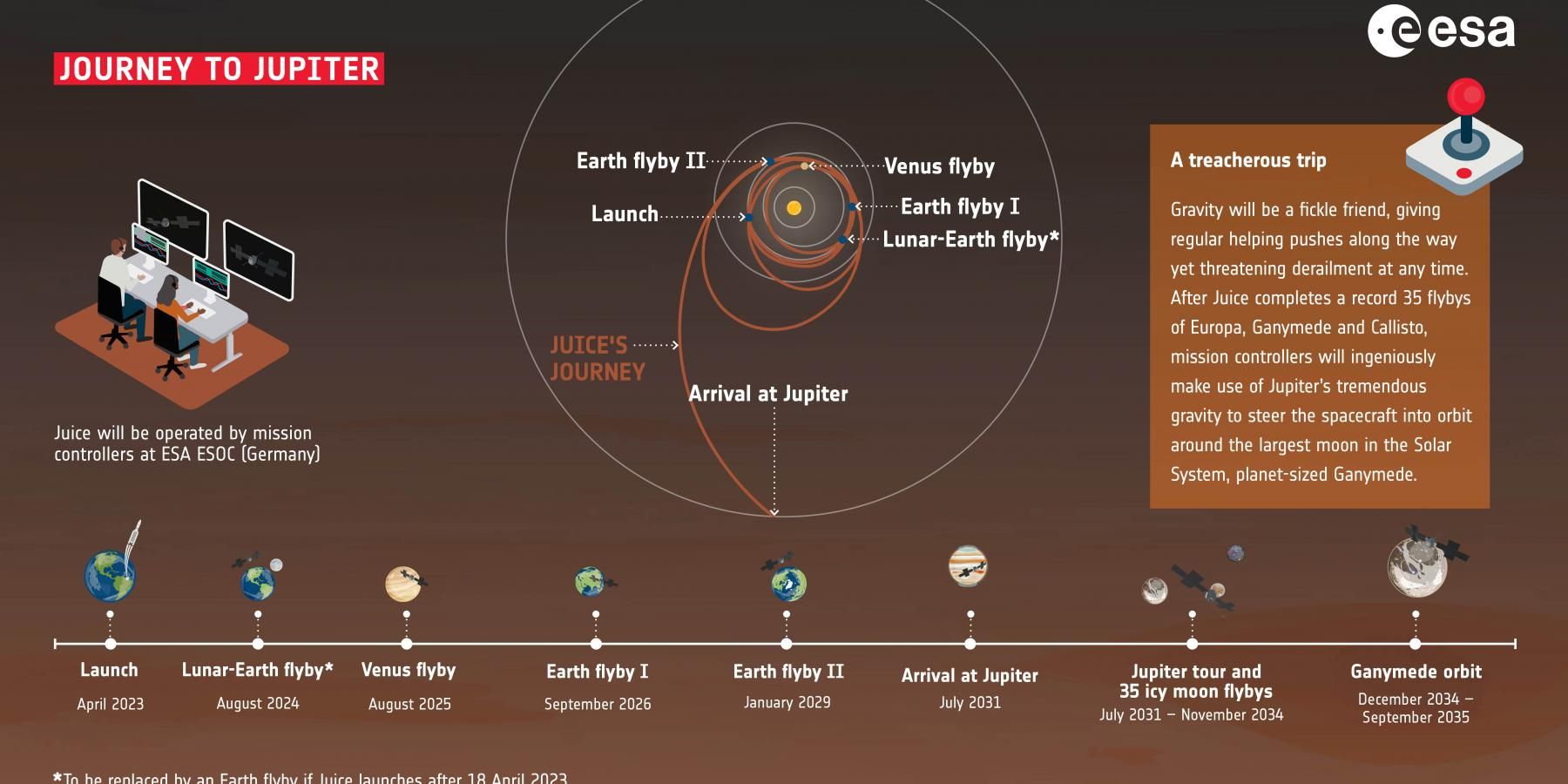Small devices, big tech pride: diodes made at the Clean Room head to Jupiter on the JUICE mission
The JUICE (JUpiter ICy moons Explorer) mission took off from French Guiana on Friday, planning to make detailed observations of Jupiter and three of its largest moons on a journey that will take eight years

Images: ESA.
On Friday, April 14, the JUICE (JUpiter ICy moons Explorer) mission took off from French Guiana. JUICE plans to make detailed observations of Jupiter and three of its largest moons: Europa, Callisto and Ganymede, finally settling into orbit around Ganymede after an eight-year journey. The objective is to explore the possibilities of life on these moons as well as to collect data on the origin of Jupiter.
To do this, the mission is equipped with ten high-precision instruments. When designing them, the intense radiation in Jupiter's environment, especially heavy ions, has been taken into account. Two of the instruments, the JANUS spectral camera and the GALA laser altimeter, have been developed by the Instituto de Astrofísica de Andalucia (IAA). Specifically, the GALA instrument must send an infrared beam towards the surface of Ganymede and deduce the topography of the Jovian satellite from the time it takes to detect its reflection. For its correct operation, the electronic subsystems have to be equipped with fast response diodes and high resistance to the aforementioned radiation.
These electronic components have been developed at the Institute of Microelectronics of Barcelona (IMB-CNM, CSIC), which has designed and produced them in its Micro and Nanofabrication Clean Room for Alter Technology. These are Junction Barrier Schottky type diodes made of silicon carbide (SiC). SiC is a semiconductor like silicon and has elements in common with it, but the technology associated with SiC is much more complex. In return, the features of the devices that can be manufactured are superior: they resist higher electric fields, more intense current densities, higher operating temperatures, and offer greater resistance to radiation (to protons, gamma rays, and also to heavy ions). .
With JUICE there are now three active missions to explore the Solar System that incorporate silicon carbide devices manufactured at the IMB-CNM. The other two are the BepiColombo (launched in 2018, bound for Mercury) and the Solar Orbiter (launched in 2020 to study the Sun's heliosphere). In these two cases, these are Schottky diodes, specially designed to protect the solar panels of both probes, which are responsible for providing power to all on-board instrumentation. In this application, the ability of these devices to function in extreme temperature ranges (between -170ºC and 300ºC) prevails.
In addition, these diodes have been the first Spanish device incorporated into the European Space Agency's catalog of preferred components (ESA Preferred Part List (EPPL)).
The mission incorporates devices developed by two CSIC centers, the IMB-CNM and the IAA-CSIC.





